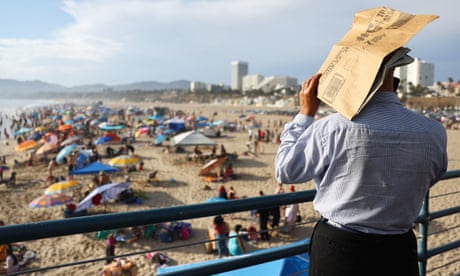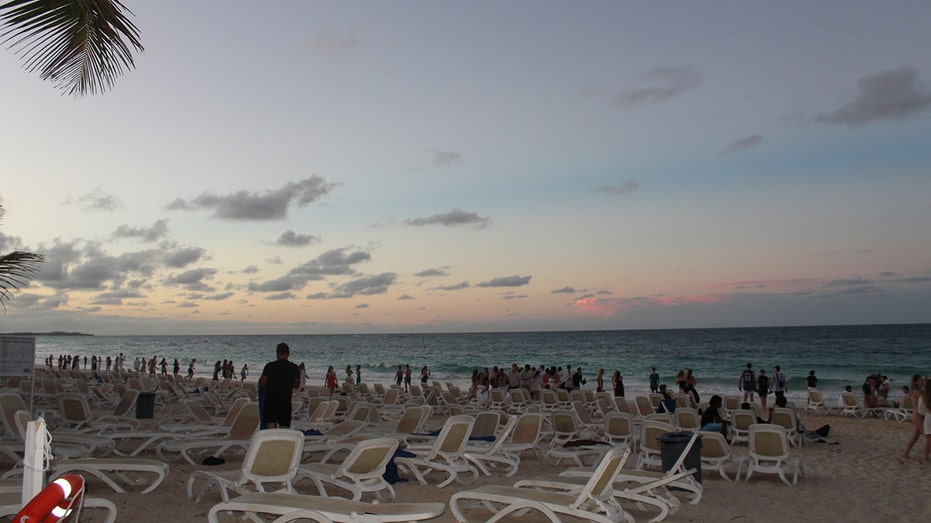- by foxnews
- 12 Mar 2025
Temperatures smash records in US west as brutal heatwave continues
Temperatures smash records in US west as brutal heatwave continues
- by theguardian
- 08 Sep 2022
- in news

Western states are struggling through one of the hottest and longest September heatwaves on record.
Temperatures began soaring last week and reached records in various parts of the region.
In Salt Lake City, a city at more than 4,000ft (1,219m) elevation, temperatures were about 20 degrees higher than normal, hitting 105F (41C) on Tuesday, the hottest September day recorded going back to 1874.
The National Weather Service (NWS) warned that dangerous heat could continue through Friday.
In California, the grueling heatwave caused officials to warn on Tuesday that demand for electricity, some of it from people cranking up the air conditioning, might outstrip supply.
The California Independent System Operator (Caiso), which oversees the electrical grid, issued a stage three emergency power alert, one step below ordering utilities to start rotating outages to ease the strain on the system.
Just before 6pm on Tuesday, an energy emergency alert rang out on cellphones across California prompting an abrupt drop in usage as residents unplugged and conserved.
The grid was ultimately able to withstand this perilous stress test, even though the peak electricity demand hit 52,061 megawatts, far above the previous high of 50,270 megawatts set on 24 July 2006.
Although there were no rolling blackouts over large areas, two outages were reported in the San Francisco Bay Area cities of Palo Alto and Alameda, affecting several thousand customers for about an hour.
Some 35,700 people lost electricity in Silicon Valley and southern and inland areas of the San Francisco Bay Area and most of the outages were heat-related, said Jason King of Pacific Gas & Electric (PG&E) said on Tuesday evening. There was no word on when power would be restored.
Meanwhile, the high temperatures fueled wildfires in both northern and southern California. Four deaths were reported over the Labor Day weekend as some 4,400 firefighters battled 14 large fires around the state, with 45 new blazes on Sunday alone, said Anale Burlew, a deputy chief with the California department of forestry and fire protection (Cal Fire).
A wildfire that started Friday in the northern California community of Weed killed two people and one that erupted on Monday and spread rapidly in the Hemet area of southern California also killed two people. Authorities said they were found in the same area and apparently died while trying to flee the flames.
Fire-risk in California mounts in the fall and officials are preparing for an escalation in the conditions that fuel them. Parched vegetation across the state is primed to burn, especially when the winds blow and the temperatures rise.
Scientists say climate change has made the west warmer and drier over the last three decades and will continue to make weather more extreme and wildfires more frequent and destructive. In the last five years, California has experienced the largest and most destructive fires in state history.
The climate crisis has also increased the likelihood of compounding catastrophes that test resilience and capacity to respond. Hurricane Kay, which is hovering near the Mexican coast, could cause thunderstorms in California.
There are risks of flooding in the southern part of the state and increased fire weather to the north.
- by foxnews
- descember 09, 2016
Daring airport trend has travelers arriving at gate 15 minutes before takeoff
Flight passengers are participating in the new viral trend, "airport theory," with flyers arriving at their gates 15 minutes before their flights depart. A travel expert weighs in.
read more


